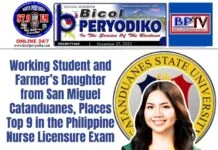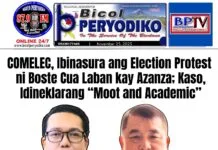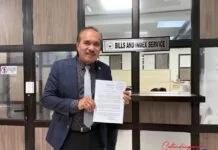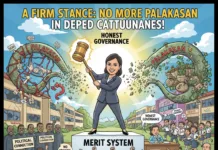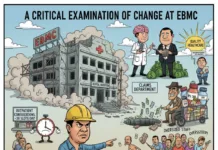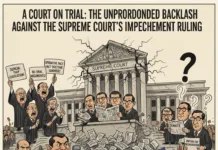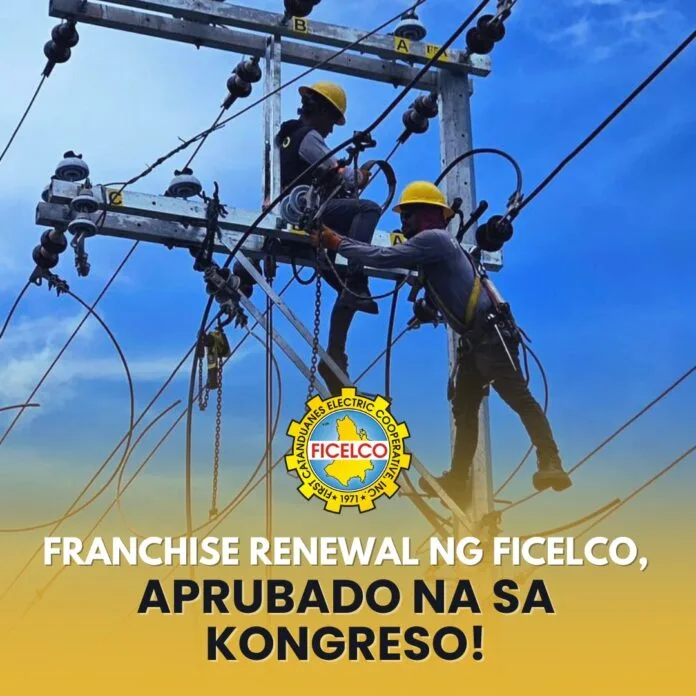The recent electoral outcomes in Catanduanes herald a pivotal moment for the province, marked by a convergence of seasoned political experience and fresh perspectives. The composition of the incoming leadership—four returning former mayors, five incumbent mayors, and two newly-elected chief executives at the municipal level—presents an unparalleled opportunity for synergistic governance. This is not merely a change of guard; it is a potential redefinition of public service, demanding a commitment to genuine progress rooted in legal fidelity and moral rectitude.
The recent electoral outcomes in Catanduanes herald a pivotal moment for the province, marked by a convergence of seasoned political experience and fresh perspectives. The composition of the incoming leadership—five incumbent mayors, four returning former local chief executives, and two newly-elected municipal leaders—presents an unparalleled opportunity for synergistic governance. This is not merely a change of guard; it is a potential redefinition of public service, demanding a commitment to genuine progress rooted in legal fidelity and moral rectitude.
Composition of Municipal Leadership:
Incumbent Mayors Continuing in Office:
- Mayor Glenda Aguilar of Caramoran re-elected
- Mayor Juan Rodulfo of Bato re-elected
- Mayor Paolo Teves of Baras (uncontested)
- Mayor Cesar Robles of Panganiban (uncontested)
- Mayor Vicente Tayam, Jr. of Gigmoto (uncontested)
Returning Former Mayors:
- Atty. Sinforoso “Posoy” Sarmiento of Virac
- Dr. Ally Romano of San Andres
- Vincent Villanueva of Bagamanoc
- Olog Tabligan of Pandan
Newly-Elected Mayors:
- The newly minted mayor of San Miguel Antonio Teves
It is worth noting that almost 99 percent of them are already familiar with their job, indicating a strong base of experienced leadership ready to engage in meaningful governance.
At the heart of this transformative potential lies the assumption of Governor-elect Patrick Alain Azanza, whose technocratic background and resourcefulness are underscored as crucial assets. His stated partnership with Congressman Leo Rodriguez further solidifies the prospects for robust inter-agency coordination, essential for leveraging both local and national resources. However, the success of this new administration will not be solely dependent on individual brilliance or political alliances. It hinges on the collective dedication to a comprehensive, integrated, and people-centric approach to governance.
The bedrock of effective governance lies in its adherence to legal frameworks and its embodiment of moral principles. The proposed activation of the Provincial Development Council (PDC) by Governor-elect Azanza is not just a strategic recommendation; it is a legal mandate enshrined in the Local Government Code of 1991 (Republic Act No. 7160). This law explicitly outlines the PDC’s role as the primary planning body, tasked with formulating the provincial development plan, coordinating development efforts, and recommending programs and projects. Failure to fully utilize the PDC is not merely an oversight; it can be construed as a dereliction of duty, undermining the participatory and democratic principles upon which local governance is built.
Morally, the activation of the PDC is a sacred trust. It provides a legitimate platform for genuine public participation, allowing diverse sectors—from civil society organizations and non-governmental entities to academic institutions and community leaders—to provide invaluable input. This participatory approach moves beyond the “dichotomy” of individual leaders working in isolation and embraces the spirit of collective wisdom. It is a moral obligation to ensure that the voices of the constituents are not only heard but actively integrated into the very fabric of policy formulation and resource allocation. True public service, in its most profound sense, is not about paternalistic provision but about empowering communities to shape their own destiny.
The call for a comprehensively developed provincial roadmap, with identified priorities from municipal and barangay levels, is paramount. This multi-tiered planning process is again not just good practice; it is a legal necessity for ensuring coherence and efficiency in public spending. Budgetary allocations, from barangay to provincial levels, must be demonstrably aligned with identified development objectives. This necessitates rigorous planning, transparent prioritization, and robust accountability mechanisms.
Morally, this unified roadmap represents a commitment to equitable development. It ensures that resources are directed where they are most needed and that the benefits of progress are diffused across all communities, rather than concentrated in privileged areas or projects driven by political patronage. The “personalization” of public resources, a lamentable practice of the past, must be unequivocally repudiated. Public funds are not the private coffers of elected officials; they are the collective wealth of the people, entrusted to leaders for the sole purpose of advancing the public good.
The groundwork laid by Governor-elect Azanza in engaging with national government offices is a promising start, indicating a proactive approach to securing external support. However, as rightly pointed out, this is far from a “finished business.” It represents merely the initial phase of a complex process involving extensive paperwork, meticulous compliance with regulations, and persistent follow-through.
The “forging of cooperation” among provincial leaders, the Sangguniang Panlalawigan, and down to the barangay level is indeed the “next assignment.” This requires more than mere political will; it demands:
- Unwavering Integrity: Public service, at its core, is a moral compact. Leaders must demonstrate unwavering integrity in their decision-making, resisting the temptations of corruption and self-enrichment. This is not just a moral expectation; it is a legal requirement under various anti-graft and corruption laws.
- Transparent Accountability: Every step of the administration, from policy formulation to project implementation and financial management, must be subject to rigorous scrutiny and transparency. This means open books, accessible information, and a willingness to be judged by the citizenry. This is a legal obligation to ensure good governance and prevent malfeasance.
- Genuine Empathy and Responsiveness: True leaders must possess a profound understanding of the pressing needs of their constituents and a genuine commitment to responding effectively, especially during times of crisis. This is a moral imperative that underpins the very essence of public service.
- Technocratic Proficiency and Strategic Vision: The ability to translate vision into concrete plans, manage resources efficiently, and navigate complex bureaucratic processes is crucial. The governor’s technocratic background should be leveraged to instill a culture of data-driven decision-making and evidence-based policy.
The “baptism of fire” for the newly minted Capitol top honcho, and indeed for the entire new administration, will be observed and judged by every Catandunganon and by various sectors. The expectation is not merely for incremental improvements but for a genuine paradigm shift—a transition from a governance model susceptible to “palakasan” (favoritism) to one founded on merit, competence, and unwavering dedication to the collective welfare.
Be that as it may, the current juncture offers Catanduanes an extraordinary opportunity. The diverse strengths of its elected leaders, particularly under the promised collaborative leadership of Governor-elect Azanza, hold the potential to unlock unprecedented progress. This potential, however, can only be fully realized through a steadfast commitment to legal principles, an unyielding adherence to moral duties, and a courageous embrace of genuine public service—a service that prioritizes the common good above all else, thereby ensuring a truly resilient, equitable, and prosperous future for Catanduanes. The time for genuine, comprehensive, and principled governance is now. (FBEYE | By: Ferdinand “Ferdz” M. Brizo)


